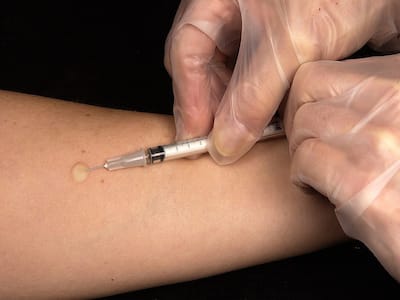
Post-Polio Syndrome is a condition that affects polio survivors years, or even decades, after their initial recovery from the acute poliovirus infection.
Few illnesses in the history of medicine have captivated the world’s attention like polio. The once-dreaded poliovirus has been largely eradicated as a result of the introduction of efficient vaccines in the middle of the 20th century. For individuals who managed to survive the first infection, Post-Polio Syndrome (PPS) is a less well-known but no less sneaky foe lurking in the shadows. Years or even decades after they have fully recovered from the acute poliovirus infection, it affects polio survivors. Since it was originally reported in the late 1970s, it has continued to baffle medical experts and pose a threat to the well-being of survivors. A complex and frequently difficult disease affecting those who survived the poliovirus infection is known as post-polio syndrome. It is dangerous due to its erratic range of symptoms and lack of treatment. However, many people with PPS are still able to live happy lives and keep their independence with the help of healthcare professionals and with the right management. Researchers are still looking into the root causes of PPS in the hopes of making more advancements in knowledge and care. To ensure that persons afflicted by PPS receive the care and support they require to thrive in the interim, it is crucial to increase awareness of this condition. Let’s look into the article to learn about PPS more clearly.
Unveiling The Symptoms
One of the most challenging aspects of PPS is its wide array of symptoms. These can range from mild to severe and may include:
Muscle Weakness
The gradual and frequently severe weakening of the polio-affected muscles is perhaps the most recognizable symptom of PPS. This muscular deterioration can make it harder to move around and make regular tasks more challenging.
Weariness
PPS frequently accompanies a crushing, sometimes overwhelming sense of weariness. The effects of this weariness might be felt not just physically but also cognitively and emotionally.
Joint Pain
People with PPS frequently complain of joint pain and stiffness. These symptoms may make moving difficult and painful.
Breathing Issues
Some PPS patients may struggle with breathing issues, such as shortness of breath and weakened lungs.
Swallowing and Speech Difficulties
PPS can occasionally affect the muscles that control speech and swallowing, which can make it difficult to eat and communicate.
Cold Intolerance
People with PPS have trouble tolerating cold temperatures, even under mild situations. This is a unique symptom.
READ RELATED: Recognizing Different Symptoms Of Heart Disease In Blood Vessels
What Leads To PPS?
Research on the precise causes of Post-Polio Syndrome is still ongoing. But other hypotheses have surfaced:
Loss of Motor Neurons: According to one idea, the initial poliovirus infection may be the reason why certain motor neurons in the spinal cord pass away. Muscle weakness and exhaustion develop as a result of the overworked motor neurons that are still alive.
Another idea claims that people with polio overuse their remaining muscles to make up for their weaker muscles. The symptoms of PPS may emerge as a result of this ongoing misuse.
Immunological System Involvement: Some researchers think that PPS may be influenced by the immunological system. The long-term effects of the body’s immune reaction to the initial poliovirus infection may still have an impact on nerve cells and muscles.
Treatment
Even though there is presently no cure for PPS, several therapeutic options are intended to control its symptoms and enhance the lives of those who are affected. These may consist of:
- Physical therapy can assist people with PPS in maintaining or enhancing their muscle strength and mobility.
- Patients with PPS can work with occupational therapists to identify strategies for adjusting to their changing skills and managing everyday duties more readily.
- To help people with PPS preserve their independence, mobility devices including wheelchairs, braces, and orthotics may be prescribed.
- To treat symptoms like pain and joint stiffness, medications such as painkillers and anti-inflammatory treatments may be utilized.
- To ease breathing difficulties, certain PPS sufferers may benefit from respiratory assistance, such as the use of ventilators.
- Maintaining a healthy diet, controlling stress, and conserving energy are all important aspects of managing PPS symptoms.
Total Wellness is now just a click away.
Follow us on
Don’t Miss Out on the Latest Updates.
Subscribe to Our Newsletter Today!
window.addEventListener(‘load’, (event) => {
$(‘#commentbtn’).on(“click”,function(){
(function(d, s, id) { var js, fjs = d.getElementsByTagName(s)[0]; if (d.getElementById(id)) return; js = d.createElement(s); js.id = id; js.src = “//connect.facebook.net/en_US/sdk.js#xfbml=1&version=v2.3”; fjs.parentNode.insertBefore(js, fjs);}(document, ‘script’, ‘facebook-jssdk’));
$(“.cmntbox”).toggle();
});
});








